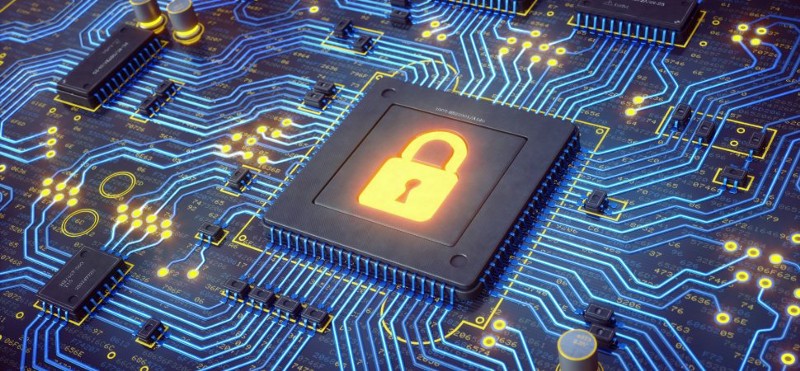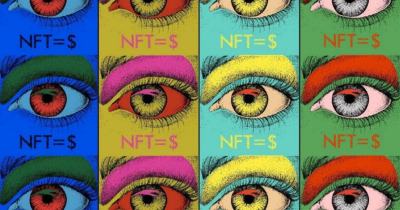
Why it is necessary to create a new chip
Cryptocurrencies are natively open-source projects. You can find the source code of Cardano on the GitHub. The same is true for Bitcoin or Ethereum. Thousands of independent researchers and experts can check the source code and verify that there is no vulnerability or back-doors. However, not everything around cryptocurrencies is open and publicly available. The safest way to keep cryptocurrencies and other digital assets is definitely a hardware wallet. Every hardware wallet contains a chip. Chip manufacturers keep chip designs closed and secret often just to maintain a competitive advantage. Manufacturers must keep innovative ideas secret otherwise they could fall into the hands of a competitor. There is one big disadvantage of that approach. It cannot be verified that the chip is really secure and does only what is expected and not something else. In a chip, there can be an unintentional vulnerability caused by a wrong design decision. The vulnerability can be misused by hackers. Alternatively, there can be intentionally introduced back doors in a chip. If a design of a chip cannot be verified by the public then it cannot be fully trusted. As a consequence, a hardware wallet cannot be trusted as well. The world has already found the beauty and advantages of open-source software. Now, we need to bring the same idea into the world of hardware. Manufacturers of hardware wallets have to choose one of the available chips that have closed architecture and must agree with the non-disclosure agreement. A non-disclosure agreement is a legal contract between at least two parties that outlines confidential material, knowledge, or information that the parties wish to share with one another for certain purposes but wish to restrict access to. It often means that a manufacturer of hardware wallets cannot inform users about chip vulnerability. To violate a non-disclosure agreement would result in a huge financial penalty.
Currently, there is no chip on the market that would fully satisfy the needs of cryptocurrencies and possibly other applications in IoT and supply chain management. To be concrete, a chip should have open and publicly available architecture, ultra-low electricity consumption, the ability to store cryptographic keys and the production should be cheap. There is no market standard for open-source trusted hardware. Every software simply needs hardware. If we want to build our future on open-source software then it is inevitable to develop also trusted hardware. A blockchain research lab at the University of Wyoming will research the design of the chips that would be suitable for the needs of the Cardano project. The trusted chip could dramatically increase the freedom, independence, and potential of the whole crypto market.
Cash-like experience
The most attractive feature could be enabling cryptocurrencies to become independent on the internet at least to some extent and take the digital value back to the physical world. Fiat money used to have only a physical form and got digitized shortly after the adoption of the internet. Nowadays, a lot of payments go through a digital form via the internet. We are used to paying via PayPal or by a card in a shop. In both cases, we do not need to hold physical money in our hands.
Bitcoin was created as a fully digital technology relying on the internet. Thus the most convenient way to make a transaction is to use a wallet. The transaction is signed by the owner of coins and broadcasted to the internet for processing. Transfer of value is realized once the transaction is included in a block that becomes a part of the blockchain. The record about the transactions will be immutably stored in the blockchain forever with all details related to the transactions. Everyone in the world can find all transactions in the blockchain. It is not always convenient. There is another important aspect. Not always the internet is accessible and there are poor countries where it is not usual that the majority of the population has a smartphone. Poor people living offline cannot benefit from using cryptocurrencies despite the fact they could benefit the most. People living in big western cities could easily live only having digital cash. It is not true for developing countries.
What if we could take the digital value of cryptocurrency and bring it back to the physical world? By doing so would create a new form of money that would be really freedom, independent, and unstoppable. There would be no limitations regarding scalability and privacy could be almost 100%. To achieve that we need to develop a chip and put it together with high-tech cryptography. It could be possible to transfer a private key from one chip to another chip. It could safely work only if there is proof that a private key exists only in a single instance. There must be proof of erasure to be sure that the key does not exist in the old chip and is present only in the chip to which it was transferred. Of course, it must not be possible to make a copy of the private key before the transfer. Such a chip could be embedded into a device like a smart-phone, or maybe a cheap physical hardware wallet. Two participants could exchange value locally just by putting two electronic devices to mutual proximity. Chips will be equipped with NFC, RFID, or a similar standard for short-distance communication. It would replicate the cash experience.
If you think about it you can see many obstacles that must be overcome. For example, even the owner of coins cannot know private keys. Copying a private key before the transfer of value to another chip would basically result in the possibility to commit the double-spend attack. It means that the chip has to create key-pair for the transfer and ensure that the private key will never leave the border of the chip. Extracting the information from the chip must be very hard, if not impossible. It can only be possible during the transfer of value to another chip and the value cannot be transferred to two chips at the same time. In addition, there must be reliable prevention against eavesdropping the communication channel during key transfer. Lastly, new coins cannot be created from the thin air. Without the internet connection, it is difficult to ensure that every coin exists only in a single version and the max supply is still the same. The solution must be robust to protect the value. Blockchain can only guard coins that are online but it can never do it with coins that are offline.
Cash-like crypto solves privacy and scalability
Every transaction has a context and there is a participant’s arrangement before value exchange. People often forget the fact that there is communication between participants. Let’s have a look at an example. Alice wants to buy a new cup on the internet from Bob’s shop. She needs to ask Bob for a blockchain address to make a payment and must provide her physical address to which the cup will be delivered. Bob will know Alice’s blockchain address and also her physical address. In the case that Alice has her coins on a single address Bob is able to see Alice’s wealth. Who else can retrieve the same information? Everyone who is able to see the transaction context. For example email communication. An attacker can see Bob’s address and can find out the price that Alice paid for the cup. So it can be easy for the attacker to see Alice’s address.
If businesses and individuals are not careful and reveal transaction context then it makes nearly no sense to use a private payment transaction. Even when they transact using a privacy coin, they still need some private channel through which they can communicate pertinent information. It turns out in our example that the best thing Alice can do is to visit Bob’s shop and buy the cup right there. Thus, the transaction context remains private. If Alice could pay from chip to chip avoiding the network communication then there is no record about the transaction. The payment is settled right after the value transfer. There is no need to wait for confirmation. There is nobody else to confirm the transaction. No middleman, no network consensus. We could enjoy this kind of privacy always when we pay in a restaurant, buy goods, go to a cinema, etc. We need privacy the most at the place where we live since we usually make most transactions offline in our daily lives.
Besides privacy, chip-to-chip transactions could help a lot to user experience and also scalability. As we said, chip-to-chip value transfer does not require network consensus so the network transaction throughput is not affected. There is another benefit from the user’s point of view. No transaction fees. On the other hand, the network needs to collect fees to have coins for the incentive model. It is not a problem for Cardano since it is cheap to keep the PoS network running and there will be a lot of online transactions. It could be more difficult to adopt this type of transaction for PoW networks since transaction fees should gradually become the main income for the incentive model.
When will the chip be ready
It is a long-term project and it can take years to deliver chip-to-chip exchange of value. The chip is primarily developed for an anti-counterfeiting solution based on the Cardano blockchain. The chip will be embedded in luxury goods and it will provide a proof-of-ownership. The industry struggles a lot with the counterfeiting and many attempts with serial codes, holographic stickers failed. End-users often have no way how to authenticate whether or not a serial code is actually real. Serial codes are actually worthless for them. It is believed that combining hardware and software could resolve the issue.
The chip will be able to hold private keys. A producer of luxury goods must be able to embed the chip into goods. The Cardano network will be able to issue tokens. It can also issue a special authentication token that can be sent into the chip. Since the private key cannot be removed from the chip the token as well cannot be removed. It will be very easy to verify that a piece of luxury goods contains the chip with the authentication token just by scanning it with a mobile phone. The chip will be able to receive the request and generate a signature that will be returned to an authenticator. The authenticator can then easily verify that the token exists in the blockchain. An application in a smart-phone can do the job easily and quickly.
It can be expected that the first version will be very simple and will not be able to do many things. Nevertheless, it can be improved over time to keep not only private keys but also metadata for example about the history of luxury goods or where it was made.
Even if a counterfeiter can extract the chip from luxury goods and embed it into counterfeit, it will be just 1:1 relation. Moreover, the original piece of luxury goods would remain without the chip so it will be difficult to sell it again. It is a huge improvement in the industry. The only thing a vendor must ensure is safe embedding into the goods. This process must be secure.
The potential of the chip is tremendous and making the chip programmable would allow adding more advanced cryptographic protocols. Functionality could be extended and one day, we could see the chip-to-chip exchange of value. As we said, it is a long way to go before we see a working prototype.
Summary
The chip-to-chip exchange of value would definitely be a game-changer for the whole industry. A value independent of the network would be really decentralized. The owner of coins could send them back to the blockchain but a certain number of coins would be used offline. Nobody would be able to prevent or censor using coins that would be transferred only via chip-to-chip. It would even work in the case that something terrible happened to the blockchain. Blockchain will be needed for many use-cases. For example in the anti-counterfeiting industry.
 People must understand the advantages of decentralization to use Cardano
People must understand the advantages of decentralization to use Cardano What does it mean for Cardano to be a platform?
What does it mean for Cardano to be a platform? About Tokens on Cardano
About Tokens on Cardano Cardano grows in important stats
Cardano grows in important stats